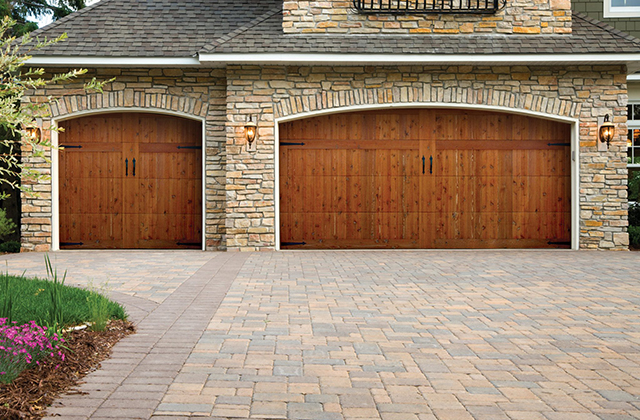How much does a concrete driveway cost
Building a driveway requires some knowledge of basic earth work including being able to establish elevations along the driveway’s center line, drainage, site clearing, possible rock removal and placement and compaction of the driveway surface material. Making a small clearing to park a car may be nothing more removing a few saplings but building a new driveway to a home or building can be a major task.
In many areas a driveway permit is required from the jurisdiction that owns the main road. County Road, County permit, State Road, State permit and so on. An application must completed and submitted along with a drawing showing the proposed driveway location, entrance construction methods as well as a check for a performance bond to assure no damage is done to the municipal roadway while the driveway is being built. Once the driveway is completed, a highway inspector will check the new work and return the performance bond if no damage was incurred.
It is very common today to have a culvert pipe installed under the driveway to divert storm water under the driveway into a roadside drainage ditch rather than over the top of driveway thereby washing away the driveway materials and washing soils,gravel stone, etc. on to the main roadway. A pipe material designated as type HDPE (black plastic with corrugations) is the most commonly used pipe today. It has a long life span as it does not rust and is very strong as well. Buried only a few inches below well compacted earth or perhaps item 4 stone, the pipe will allow a tandem dump truck to easily pass over without crushing the pipe.
Once the driveway location is set, the drainage culvert is set in place with a slight downward tip to help water scour the inside of the pipe clear of debris with rain water washing. Driveways are usually at least ten feet wide but the beginning or “mouth” of the drive may be twice that. This allows for easier turning in and out of the driveway on an angle. Otherwise you would have to make a sharp right angle turn each time. Not an easy driving maneuver. Soils or stone being placed around and over the pipe must be installed in shallow layers. The use of a vibratory compactor is almost mandatory if the driveway is to be used right away. If a long time period will elapse (months or years) natural settlement of the material may suffice but is not recommended. Many municipalities require the first section of the driveway to be paved with asphalt. Twenty to Twenty-Five feet is common with the entire mouth of the drive included. This prevents car tires from spinning gravel and rocks on to the main roadway surface and if struck by other cars or a snow plow, can become airborne hazards.
With the entrance completed, the clearing and removal of trees or stumps, large rocks and other site items can begin. Being able to use a transit and rod to set final grade elevations for the center line of the driveway is a big help. A surveyor can of course set what are called grade stakes for you to follow as you construct your road bed. You see them often at road work sites with red or orange plastic tape hanging from them. That is how the road workers know where and how high to place the soils for the roadbed. House driveways commonly are constructed with a bulldozer and perhaps some type of backhoe or excavator. When special conditions arise such as rock outcrops that are in the way, dynamite or special rock hammers may be required. These are for the pros alone to handle.
Once the base of the driveway has been cleared it may require some drainage piping under the driveway to allow rain runoff to pass harmlessly under the driveway to a lower elevation. Mountain streams,brooks and wet weather run offs all have to be handled to prevent storm water runoff from destroying the driveway with each rainfall. Constructed properly in the correct locations, these drains will last for many, many years.
The last item is the driveway topping. Driveways are not usually asphalt paved within the first few years to allow the road bed to completely settle into place. The same of paver stones, concrete or other decorative surface materials. A six inch thick layer of a stone material known as DOT Item 4 placed on top of the bare earth and then compacted with a heavy duty roller will last for a good long time while providing a great driveway. Over time as the ground settles, small amounts of Item 4 may be added to maintain a level and smooth condition. Only once all settlement has stopped, and it is determined that all the drainage piping is working correctly, should a final driveway topping of your choice be applied.
Pete
Your Friendly Building Inspector
http://www.Wagsys.com
BICES-Building Inspection & Code Enforcement System Software
Pete is a 30+ year building inspector with experience in both public and private construction industries. From schools to treatment plants, from private homes and condo projects, to large residential landscaping projects, he has worked both in the building design areas and field construction in the Eastern US. In 2006 he formed along with two other building inspectors, Wagsys LLC which produced software for municipal agencies in the fields of building departments, planning boards and Zoning Boards of Appeals.
Article Source: http://EzineArticles.com/expert/Peter_Ackerson/618010
Article Source: http://EzineArticles.com/5794691

